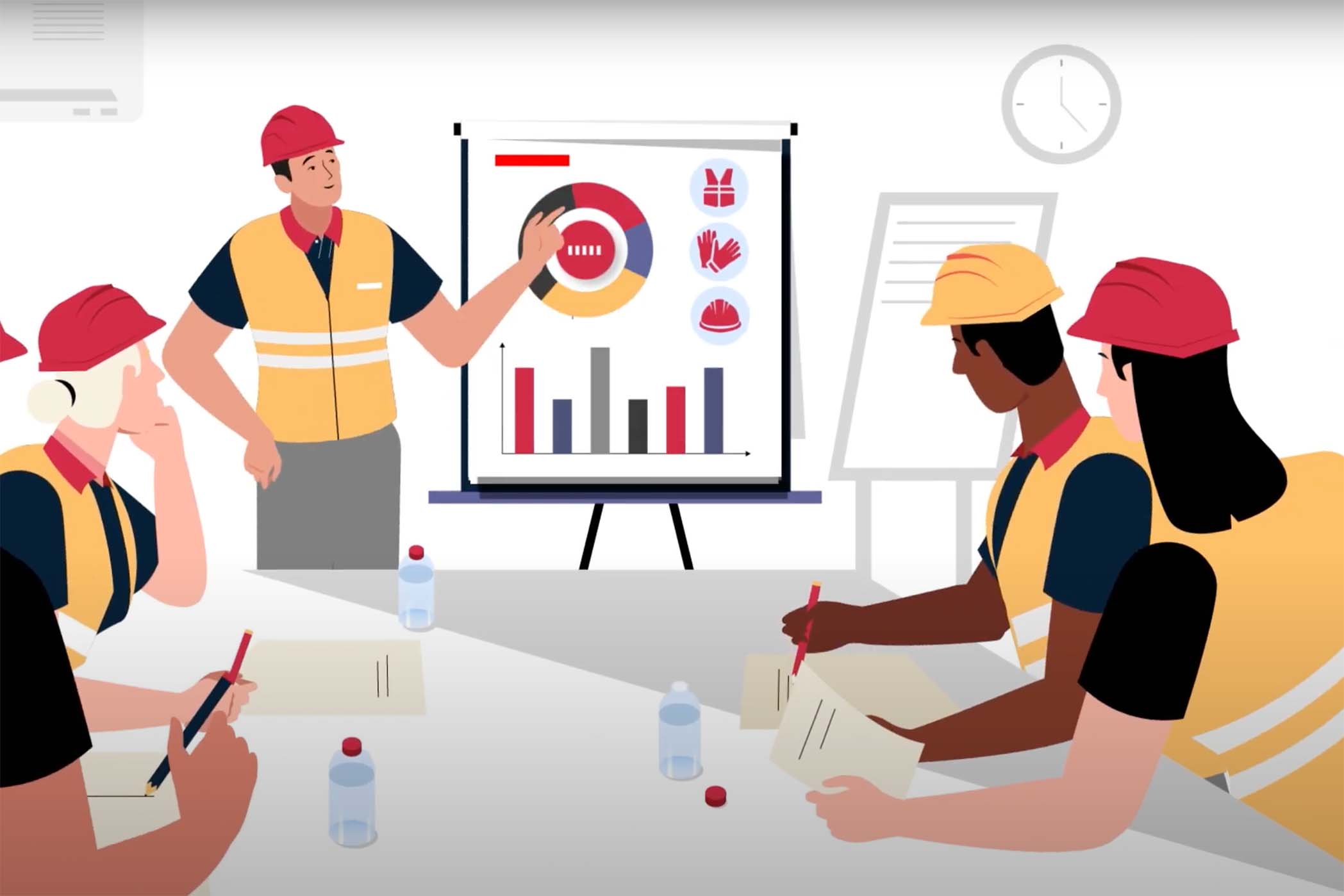

Understanding and Preventing Serious Injury and Fatalities (SIFs)
By Grainger Editorial Staff 5/17/21
In safety management, numbers matter.
Something happens on the floor or on the job site, which qualifies as a recordable, which contributes to a rate. Over time, small changes in rates can help indicate whether a program is moving in the right direction or the wrong one.
The statistical perspective is powerful, and the story these rates tell is important. But a growing body of evidence suggests that the story told by one commonly reported rate is not complete. The real picture may be less rosy than it seems.
If we want to continue making progress in improving the safety outcomes that matter most, fresh eyes and fresh thinking may be needed. It all comes back to the rates.
Incident Rates and the Heinrich Pyramid
Many organizations use the total recordable incident rate (TRIR) as an EHS performance indicator, allowing benchmarking and comparisons within and across industries. But the TRIR lumps together incidents that vary widely in their severity, since any medical treatment and days away from work are enough to qualify an incident as a recordable according to OSHA's recordkeeping requirements.
The thinking behind this "all incidents matter" approach goes back to 1931, when Herbert Heinrich published a pioneering book on industrial safety based on his research in the insurance industry. He was one of the first to bring a statistical view to the problem of safety.
Heinrich's view was that for every safety incident, it was just a matter of chance, a roll of the dice, that determined whether the outcome would be a close call, a fatality, or something in between. He stated that for every 330 incidents, 300 would be near misses resulting in no injury, 29 would result in minor injuries, and one would result in serious injury. This relationship is called the Heinrich pyramid or the Heinrich triangle.

It would follow from this that if safety leaders are able to reduce the number of total incidents of any severity, the number of more serious injury-causing incidents will also go down. If you roll the dice fewer times, you'll have fewer opportunities to come up snake eyes, and correspondingly fewer of those one-in-330 serious injuries. For a long time, that's what safety leaders have tried to do.
However, something unexpected has been happening. Over the past few decades, the rate of total incidents has continued its rapid decline, while the number of fatal incidents has been going down much more slowly. Between 1992 and 2019, the TRIR went down by 68.5%, while the fatality rate went down only 30%, with most of this decline coming before 2010. In fact, recent years have seen the fatality rate flattening out at a plateau, rather than continuing to move in the right direction. Because of this divergence, there has been a growing consensus that a fresh approach may be warranted.

A New Approach
One approach that has the backing of many safety leaders is to focus specifically on preventing those incidents that have the potential to become serious injuries and fatalities (SIFs). The point here is to think less about actual outcome and more about the potential outcomes, because not every near-miss or incident is one that could have led to a SIF with a different roll of the dice. For example, a person picking up a heavy load is exposed to a hazard that can result in a muscle strain or pull, but this is not a hazard with SIF potential, since there's no possibility of a life-altering or fatal injury here.
According to this new line of SIF-focused thinking, the Heinrich pyramid can still be a useful conceptual tool, and efforts to track and reduce total incident rates remain valuable—but it's important to recognize that only a subset of the near-miss incidents that form the base of the pyramid actually have the potential to lead to serious injuries or worse. For example, in a 2015 study, investigators looked closely at incident reports from several organizations and determined that 21% had SIF potential, or about one in five.
SIF prevention means going above and beyond incident prevention to give special attention to the circumstances that surround hazards with SIF potential with the goal of driving more rapid reduction in the number of serious injuries and fatalities.
Developing a SIF Prevention Strategy: Where to Go Next
One basic idea of SIF prevention is to focus attention on the importance of effective controls around high-risk activities. Controls are:
- Acts, or actions that must be taken
- Objects, or devices that work when needed without acts
- Systems, or combinations of acts and objects that help protect people from the hazard
When SIF potential is identified, critical controls are put in place to help prevent or mitigate a potentially fatal incident.
Organizations that want to learn more about SIF prevention and controls can consult white papers and webinars published by The Campbell Institute, a center of excellence affiliated with the National Safety Council. These publications go deep into the conceptual background of SIF prevention and also describe some of the practical techniques and solutions used by the Institute's member organizations, which include Grainger.
An on-demand webinar presented by Grainger in collaboration with the American Society of Safety Professionals (ASSP) explores strategies for SIF prevention.
Learn more about Grainger solutions that can help keep your people safe, including:
![]()
The information contained in this article is intended for general information purposes only and is based on information available as of the initial date of publication. No representation is made that the information or references are complete or remain current. This article is not a substitute for review of current applicable government regulations, industry standards, or other standards specific to your business and/or activities and should not be construed as legal advice or opinion. Readers with specific questions should refer to the applicable standards or consult with an attorney.






